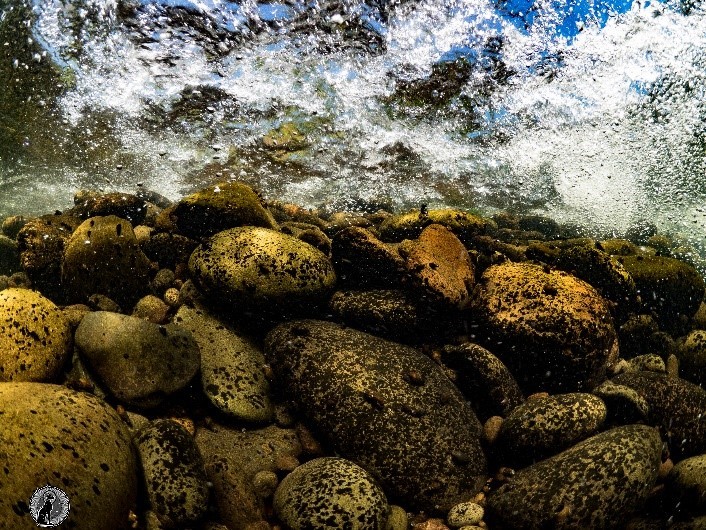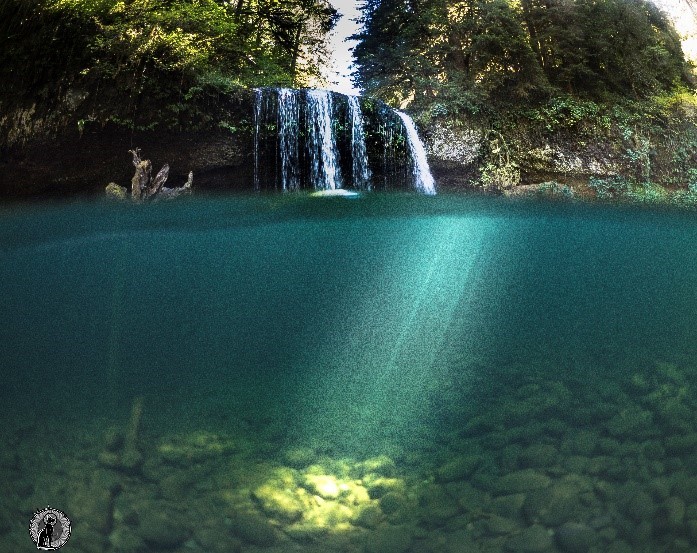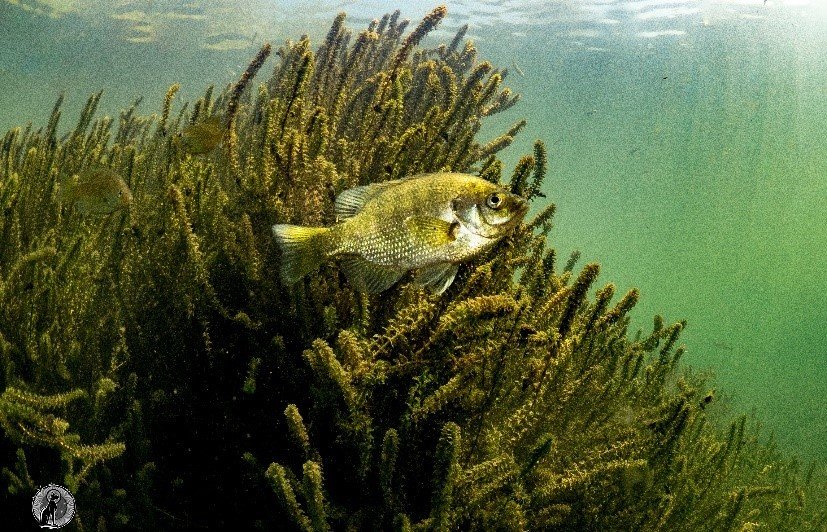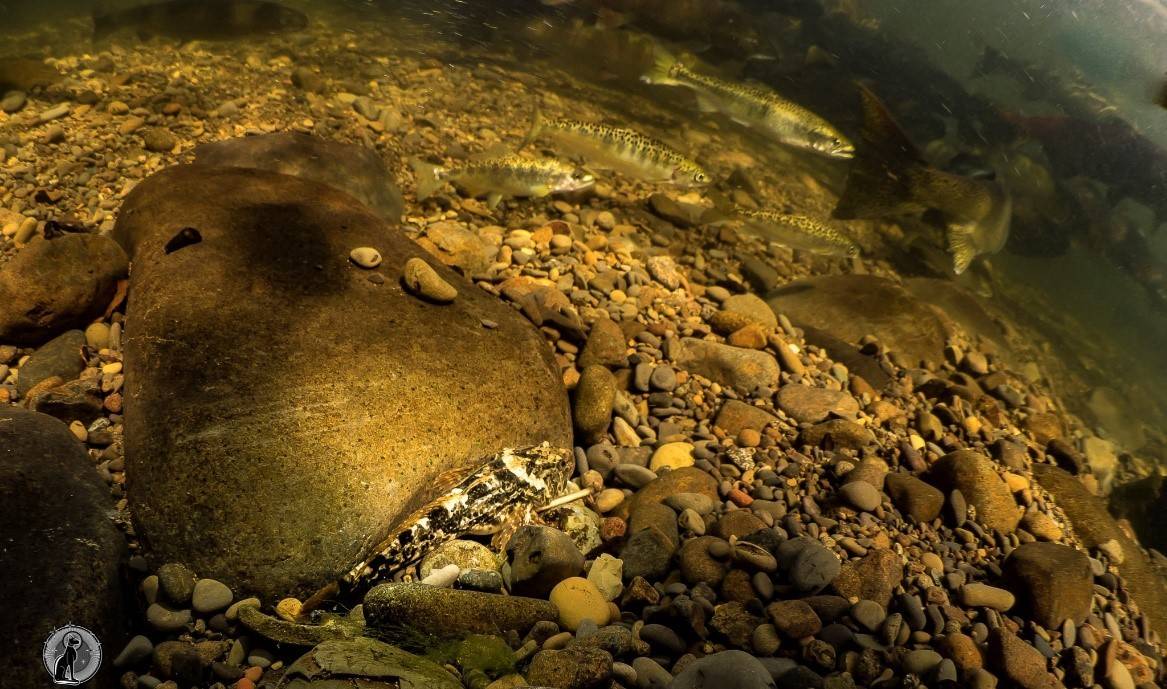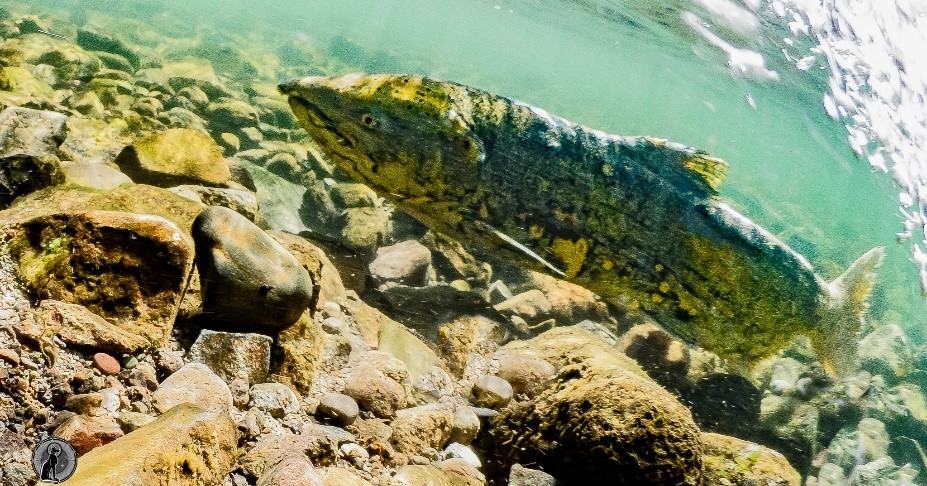News
River Diving
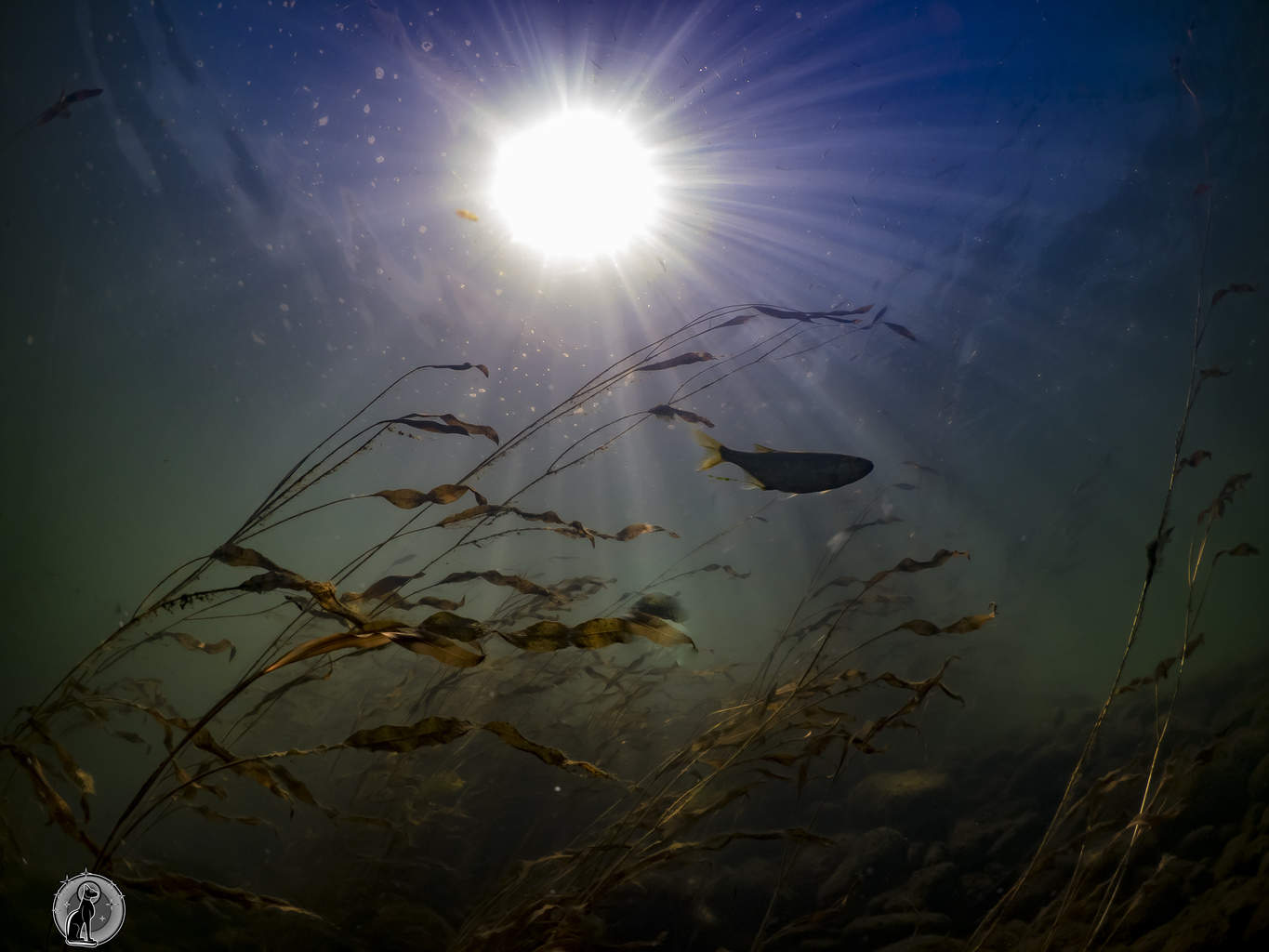
If you like diving and underwater photography as much as I do and you live 3. 5 hours inland from a good dive site, you might find yourself looking to a new venue to enjoy. I will openly admit I had a mission as I wanted pictures of freshwater fish, especially salmon. Thus began my river diving adventures this summer.
I am inspired by the work of Martin Edge and Eiko Jones and what they do with light underwater (the “God Beams” as the topside photographers say) and was thinking about some ways to do some new things I had in mind with long exposure and ambient light. As a lot of river diving here in Oregon can be relatively shallow in the rivers (relatively shallow being less than 25 feet). I was really wanting to work with ambient lighting in clear waters and be on eye level with the royalty of the fish world – salmon and steelhead trout.
The next logical thing to do was put together an investigatory dive. Equipment was my first consideration starting with photographic gear. I packed my Olympus OMD-E1 in a Nauticam housing with a Panasonic Lumix 8mm fisheye lens and a 4.33 dome port and then started to think about dive gear. I was diving the McKenzie River in Oregon which has gin clear visibility; however, it is also a frigid 49 degrees F, so I packed my Bare crushed neoprene drysuit and whites fusion thermals. I packed my warm water fins as they are shorter and lighter than my Apollo biofins, and I selected two aluminum 80 tanks with 3000 psi a piece as my steel 100 tanks weigh 40 pounds and I didn’t know what access would be like or how long I would be walking with gear on. My lightweight warmwater backplate and regulator was added to the gear pile with a 12 pound weight belt plus 4 extra pounds – surely that would be plenty. It was not, which I discovered later.
River diving entails a few different things that you may or may not be used to. Number one is current, and in some cases, a LOT of current. You may be wearing 20-25 pounds in a wetsuit/drysuit in 5 feet of water so you can stay down. Freshwater is deceiving as you do need less weight than salt, but you have to overweight to account for current. I also have had to anchor myself along the bottom in interesting ways with a robust stainless steel reef stick that I own and by shooting with one hand and hanging on to logs, rocks, etc. with my other hand.
Fish are often found under tree roots so this can be very good shooting. I also did some shooting where I lay in the middle of a big riffle (stretch of fast moving water) and just shot water flowing over me while I anchored in with my stainless steel reef stick.My first dive I did not think about extra weight and I was soon sailing along like a balloon underwater getting blown through culverts and into large woody debris piles until I started to anchor myself by grabbing onto stuff and by putting rocks in my pockets for extra weight. Not getting my camera knocked out of my hands or rubbing the dome port glass on rocks was also a challenge. I also used my feet to push against logs so I could face into the current and shoot.
Number two is temperature. Some rivers you can go with little or no exposure suit, however I wouldn’t recommend that due to rocks, logs, etc scraping you up. My home rivers in the summer range from 65 to 48 degrees F. I found that for me I like the freedom of a wetsuit and for temperatures down to 55 degrees I was good in a 5mm wetsuit. Below 55 I could last about 20 minutes and then my teeth were chattering. At that point I was using my crushed neoprene drysuit with thermals.
I can go gloveless to 50 degrees but below that I would wear 5mm gloves. I usually always wear a hood to keep my hair out of my way. I’m toasty with this set up but temperature is a personal thing.
I recently hiked into a mountain waterfall and skin dove with my 5mm wetsuit to try and get some good over and under shots. The water was 47 degrees F which was pretty chilly but 20 minutes of being chilly was worth it for the shots I got there.
Number three is access and the diving style. Access to some rivers is back up to the side and jump in while with others you have to walk along the riverbank to get to a place you can safely access. Some rivers you have to climb down the sides and these sides can be steep and/or rocky and doing this with gear on can be a strenuous experience. Not falling down the side of a river on top of your camera gear and rolling into blackberry bushes on the way down is really the goal. Being somewhat nimble and strong is a plus for these rivers. River diving is not about calmly swimming along with perfect buoyancy most of the time. Many times you are crawling in between pools if water is low and sometimes you have to get out and walk to the next pool. Sometimes you can get into deep pools and these are really nice places to shoot when fish are holding there. These you can swim around, although I like to employ stealth technique and sit or lie calmly on the bottom until the fish are done being freaked out. I then let them get back to their regular business so I can take shots.
Some observations on fish behavior… I found that juvenile fish are much more curious than adults. Some adult fish can be very skittish, and some can be very bold and rush right up to you.
Freshwater sculpin are very fun to photograph and they are full of attitude as their marine cousins and they will fearlessly swim right up to you and sit right in front of your dome port. They are ferocious predators and will attack anything they think could fit in their mouth. Warmwater fish such as bass or bluegill are the most curious of the fish. They will literally photobomb every picture you take and they will nibble on your hands, mask, face, etc.
Male smallmouth bass are quite beautiful when they are mating or guarding their nests and can make striking pictures. Similar behavior is exhibited by native minnows such as dace, shiners, chub, and suckers.
I am currently working on a series of shoots with fall Chinook salmon that have returned from the ocean after 4-5 years of being away from their natal streams. How these fish find their way back to the very place they emerged from the gravel is an amazing question to me. Even near death these fish command respect as they have returned to fulfill a mission that started over 5,000 years ago. I wax poetic here as I am a fisheries biologist by trade.
I do NOT dive alone EVER in rivers. There are too many variables to not have a buddy or shore support. Yes, you have a BCD and regulator, however if you get stuck in a large woody debris pile or hung up on the bottom for some reason there could be a very bad outcome. Having another pair of eyes on you is a good thing. If you bring along a creative “dry” photographer they can take good topside pictures. I have not needed to tether up due to high river current to date but having someone watching your tether at all times is a smart thing to plan for. I usually do some scouting in advance for possible sites so I know what to bring.
I might add that I am eternally grateful to my cohorts in the fishery business who have clued me in to good sites and times to go and in some cases even driven me around and put me in on some great fish action. Treat these people well and buy them beer as they can be key to some beautiful pictures.
My last plug is for quiet respect of fish, especially if you are somewhere where they are spawning. This is not a good time to be upsetting fish and driving them away from their spawning beds. Better to wait until after the spawning or before to get pictures. There is a fine line between harassment and annoyance so please understand that line and respect it.
I love diving our beautiful Pacific Northwest seas but I also feel that river diving adds a fun and new slant of the beauty of the underwater world and you definitely get to see things you do not see in the ocean environment… plus you don’t have to soak your gear so much after you dive freshwater!
You can see more of Laura’s underwater photography here.
Gear News
Introducing the TR-80, IR-50 and CS-30 Regulators from DYNAMICNORD

Whether you are a beginner or a professional diver – with the three new main regulators from DYNAMICNORD, everyone will find their favourite regulator. They all look super stylish.
Excellent performance with the TR-80
Quality and performance are the be-all and end-all for regulators. It is not for nothing that the TR stands for Tec Reg. The innovative design of the TR-80 guarantees absolute reliability – even in ice-cold waters.

Perfect breathing effort at 0.8 J/l / certified for diving in waters below 10 degrees / structural design made of solid brass for best cold protection / membrane-compensated design with dry seal of the first stage / reduced exhalation effort thanks to optimized exhalation membrane and bubble deflector / adjustable Venturi (dive/predive) and adjustment knob for individual inhalation comfort / innovative design of the front cover prevents free-flow in strong currents or when diving with scooters / design made of sandblasted brass, matt chrome finish / 2 HP and 4 LP outlets / mouthpiece made of high-quality, anti-allergic silicone for maximum comfort.


Amazing underwater adventures with the IR-50
The IR-50 is the top regulator for advanced and experienced divers. Natural breathing is the essence of this regulator.

Ideal breathing effort at 0.8 J/l /certified for diving in waters below 10 degrees / compensated membrane / adjustable venturi (dive/predive) and adjustment knob for individual inhalation comfort/ outlet valve and deflector for minimum exhalation effort and reduction of bubbles on the face / design made of sandblasted brass, matt chrome finish / 2 HP and 4 NP outlets / mouthpiece made of high-quality, anti-allergic silicone for maximum comfort.


The Workhorse – our CS-30
For diving centres and diving beginners – the workhorse stands for strong construction, reliability and robustness. Perfect for your training.

Optimal breathing effort at 0.8 J/l /recommended for diving in waters above 10 degrees / non-compensated piston / adjustable venturi (dive/predive) / outlet valve and deflector for minimum exhalation effort and reduction of bubbles on the face / design made of sandblasted brass, matt chrome finish / 1 HP and 3 NP outlets / mouthpiece made of high-quality, anti-allergic silicone for maximum comfort.


Octopus OP-30
The OP-30 is the ideal addition to all DYNAMICNORD regulators. It is identical in construction to the CS-30.

The TR-80, IR-50, CS-30 (DIN & INT) regulators and the Octopus OP-30 are available from DYNAMICNORD dealers and in the online store.
DYNAMICNORD – Your Outdoor Companion.
Marine Life & Conservation
Paul Watson Released as Denmark Blocks Japan’s Extradition Bid

Renowned anti-whaling activist Paul Watson has been released from custody in Greenland after spending five months in detention. Denmark’s Justice Ministry rejected Japan’s request for his extradition, citing insufficient guarantees that his time already served in custody would be credited against any potential sentence.
The 74-year-old Canadian-American was arrested on July 21 in Nuuk, Greenland’s capital, when his ship docked to refuel. His arrest was based on a 2012 Japanese warrant related to a 2010 encounter in Antarctic waters. Japan alleged Watson obstructed operations and caused damage to a whaling research ship during efforts to disrupt illegal whaling. Watson has consistently denied these claims, maintaining his commitment to marine conservation.
Denmark, which oversees extradition matters for Greenland, concluded that while the legal conditions for extradition were met, the lack of assurances from Japan regarding time-served credit made extradition untenable.
In a video shared by his foundation, Watson expressed gratitude and relief, saying, “After five months, it’s good to be out… and good to know they’re not sending me to Japan.” He added that the most difficult part of his time in custody was being separated from his two young sons.
Watson is a pioneering figure in marine conservation, known for founding the Captain Paul Watson Foundation in 2022 after decades of activism with the Sea Shepherd Conservation Society. His bold efforts to defend marine life have earned him widespread support, including from celebrities and conservationists. His work has also been featured in the acclaimed reality TV series Whale Wars.
Watson’s lawyer, Jonas Christoffersen, praised the decision, stating, “We are happy and relieved that Paul Watson is now free.” He added that Watson is eager to reunite with his family and continue his vital work.
The arrest occurred while Watson’s vessel, the M/Y John Paul DeJoria, was en route to the North Pacific with a team of 26 volunteers to intercept a Japanese whaling ship. His foundation described the arrest as politically motivated and emphasized that Watson’s actions were focused on ending illegal whaling practices.
Japan resumed commercial whaling in 2019 after leaving the International Whaling Commission, asserting that whale meat is a cultural tradition. Conservationists, however, continue to challenge these practices, highlighting their impact on marine ecosystems.
Despite the challenges, Watson remains steadfast in his mission to protect marine life and bring attention to whaling practices. His dedication to ocean conservation has made him a globally respected advocate for the environment.
-

 News2 months ago
News2 months agoIconic SS United States to become the World’s Largest Artificial Reef
-

 News3 months ago
News3 months agoBook Review – 52 Assignments: Underwater Photography
-

 Gear News3 months ago
Gear News3 months agoDYNAMICNORD – New German diving brand enters the British market
-

 News3 months ago
News3 months agoExploring Cenote El Pit: A Diver’s Dream
-

 Gear News3 months ago
Gear News3 months agoTry BARE drysuits (and maybe even win one!) this Friday with Sea & Sea at North West Dive Fest
-

 Marine Life & Conservation3 months ago
Marine Life & Conservation3 months agoBook Review: Coral Triangle Cameos
-

 Blogs2 months ago
Blogs2 months agoDive the Egyptian Red Sea this Autumn with Regaldive
-

 News3 months ago
News3 months ago2024 Ocean Art Underwater Photo Competition Announced


